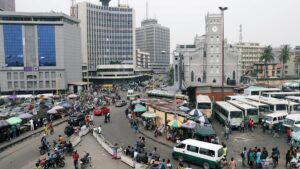- Output and new orders in Kenya’s private sector fell in September after posting a marginal rise in August.
- The latest Purchasing Managers Index shows jobs and inventories dipped for the first time in seven months.
- Input cost pressures accelerate to the second highest in near-decade survey history
Kenya’s private sector activities contracted in September as high fuel prices and inflation took a toll on businesses, which saw a drop in sales, the latest Purchasing Managers Index (PMI) now indicates.
Stanbic Bank Kenya’s PMI slid back into negative territory at the end of the third quarter, as firms saw a sharp contraction in new orders following a brief respite in August. In the period, elevated inflationary pressures and rising fuel bills dampened client sales, leading to the second-fastest rise in input costs in the survey’s near-decade history.
According to the survey, businesses responded by reducing their output levels in September. They also made cuts to both employment and inventories for the first time in seven months.
Selling charges meanwhile rose sharply, as firms looked to pass costs through to customers. PMI readings above 50.0 signal an improvement in business conditions in the previous month, while readings below 50.0 show deterioration.
After signaling an upturn in operating conditions for the first time in seven months in August, the headline Kenya PMI returned to contraction territory in September. The index dropped from 50.6 to 47.8, indicating a moderate deterioration in the private sector economy.
Read also: Kenya’s Business Environment Sees First Uptick of the Year
Output and new orders in Kenya’s private sector
Output and new order volumes both declined for the seventh time in eight months over the course of September. As seen in recent months, survey participants largely attributed the contractions to rapid price increases, which led to both intense cost pressures and a drop in customer demand. (www.christophechoo.com)
Declines in output and sales followed fractional rises in August, largely driven by an abating of political demonstrations.
Detailed sector data pointed to a considerable downturn in manufacturing output, alongside contractions in services, wholesale and retail and construction.
Christopher Legilisho, Economist at Standard Bank said: “The September Purchasing Managers Index (PMI) implies slower economic growth momentum after the positive performance in August.”
Legilisho noted that Kenya’s private sector output and new orders notably contracted in September, a scaling back of purchasing activity, and a slight drop in employment levels across all sectors other than agriculture.
Bucking this trend, the agriculture sector saw output and new orders expand, although rates of growth had softened from earlier in the year.
Read Also: Tax and inflation woes plunge Kenya into severe shortage of smartphones
Input prices on the rise
Kenyan firms meanwhile reported another marked rise in input prices in September, with the rate of inflation even accelerating to the second-highest on record. Anecdotal evidence indicated that currency weakness and higher fuel bills were mainly behind the rise.
“The decline in momentum is attributed to pump prices having been increased by the Energy and Petroleum Regulatory Authority (EPRA), and cost-of-living pressures arising from increased taxation as well as likely further tax increases, per the newly released medium-term revenue strategy,” Legilisho said.
Further, rising interest rates have weighed on consumer demand, business levels, and expectations. Output charges rose sharply accordingly, albeit to a slightly lesser degree than August’s 14-month high.
Demand weakness led to a renewed drop in firms’ purchasing activity during September, resulting in the first decrease in stock levels for seven months. The fall in inventories also came amid a slight lengthening of delivery times, as price pressures resulted in cash flow issues at some vendors.
Likewise, Kenyan businesses reduced their headcounts for the first time since February, although the decrease was only slight overall. Firms signaled that lower new order inflows and a subsequent drop in backlogs had led them to cut labour capacity.
Read also: Record-high fuel prices in Kenya amid economic woes
Output to grow in coming months
Looking ahead, firms maintained positive expectations for future activity in September, with optimism little-changed from August’s five-month high albeit still weak in a historical context.
Overall, 19 per cent of survey respondents forecasted output to grow over the coming 12 months, with panel reports mainly linking this to expansion plans. “Despite reduced output, manufacturing firms were the most optimistic about the outlook whereas wholesale and retail firms were the least,” Legilisho noted.
Indeed, inflationary pressures persist, with both input and output prices still elevated – 42 per cent of surveyed firms reported higher costs, often because of the deteriorating exchange rate.
“The September PMI paints a grim picture, and there may well be further near-term exchange rate depreciation despite recent positive reforms. However, we still foresee resilient GDP growth of 5.5-5.8 per cent, led by agriculture,” he said.
S&P Global compiles the Stanbic Bank Kenya PMI from responses to questionnaires sent to purchasing managers in a panel of around 400 private sector companies. The panel is stratified by detailed sector and company workforce size, based on contributions to GDP.
The sectors covered by the survey include agriculture, mining, manufacturing, construction, wholesale, retail and services. Survey responses are collected in the second half of each month and indicate the direction of change compared to the previous month.
A diffusion index is calculated for each survey variable. The index is the sum of the percentage of ‘higher’ responses and half the percentage of ‘unchanged’ responses.











